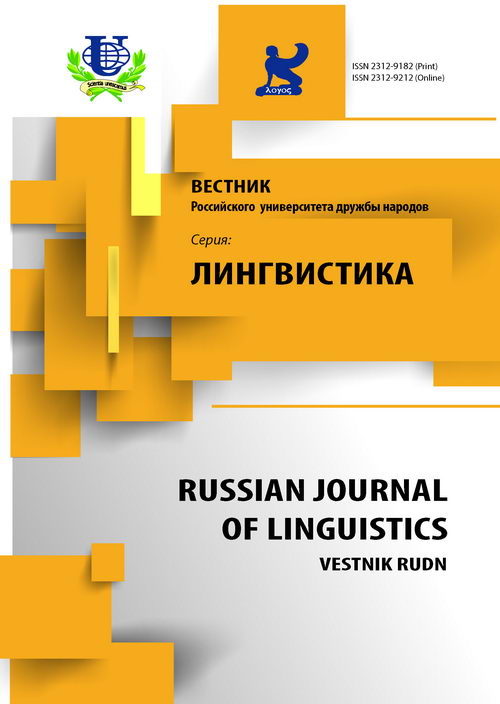Слово, контекст и коммуникативное значение
- Авторы: Иштван Кечкеш -1
-
Учреждения:
- Университет Штата Нью-Йорк
- Выпуск: № 1 (2014)
- Страницы: 7-18
- Раздел: Статьи
- URL: https://journals.rudn.ru/linguistics/article/view/9561
- ID: 9561
Цитировать
Полный текст
Аннотация
В настоящей статье предпринимается попытка доказать, что существует динамическая связь между значением слова и контекстом. Она состоит в том, что значение слова создает контекст и оно создается им. Согласно большинству прагматистов контекст дает возможность слову проявить свои скрытые потенциальные возможности. Но это только одна сторона связи между словом и контекстом. На самом деле слова или словосочетания могут создавать свой контекст. Слова кодируют прежний опыт, прежнее переживание и прежние контексты употребления данного слова или выражения. Слово является складом прежних ситуаций, в которых оно было употреблено. Можно сказать, что слово - это склад прежних контекстов, или преконтекстов. Знание внешнего мира появляется в двух типах контекста: 1) актуальные, ситуативные, внеязыковые контексты, 2) «Старые», предыдущие, прежние контексты, закодированные в словах и других лингвистических единицах (см. Kecskes 2004, 2008, 2013). В статье представлена динамическая модель значения (ДМЗ), которая описывает то, как актуальное коммуникативное значение порождается в результате столкновения закодированных в лексических единицах «старых», предыдуших контекстов и актуального ситуативного контекста, в котором данное высказывание употребляется.
Список литературы
- Leech Geoаfrey. Principles of Pragmatics. - London: Longman, 1983.
- Третьякова В.С. 2004. Речевой конфликт и аспекты его изучения. Юрислингвистика-5: Сервер электронных публикаций ММЦ АГУ.
- Ельмслев Л. Пролегомены к теории языка // Новое в лингвистике. - М., 1960. - Т. 1. - C. 303.
- Виноградов В.В. Русский язык. - М., 1947.
- Kecskes I. Dueling context: A dynamic model of meaning // Journal of Pragmatics. - 2008. - Vol. 40. - Issue 3. - P. 385-406.
- Kecskes I. Intercultural Pragmatics. - Oxford, UK: Oxford University Press, 2013.
- Фоменко Ю.В. Человек, слово и контекст (Концепция человека в современной философской и психологической мысли. - Новосибирск, 2001. - С. 164-168).
- Кацнельсон С.Д. Категории языка и мышления: Из научного наследия / Отв. ред. Л.Ю. Брауде. - М.: Языки славянской культуры, 2001.
- Лотман Ю.М. Внутри мыслящих миров: человек - текст - семиосферы - история. - М., 1966.
- Kecskes I. Situation-Bound Utterances in L1 and L2. - Berlin/New York: Mouton, 2003.
- Kecskes I. Lexical merging, conceptual blending, cultural crossing. - 2004.
- Kecskes I. On My Mind: Thoughts about Salience, Context, and Figurative Language from a Second Language Perspective // Second Language Research. - 2006. - Vol. 22. - No. 2. - P. 219-237.
- Третьякова В.С. Конфликт как феномен языка и речи // Известия Уральского государственного университета. - 2003. - № 27.
- Gee James P. Introduction to discourse analysis: Theory and method. - New York: Routledge, 1999.
- Падучева Е.В. Динамические модели в семантике лексики. - М.: Языки славянской культуры, 2004.
Дополнительные файлы















